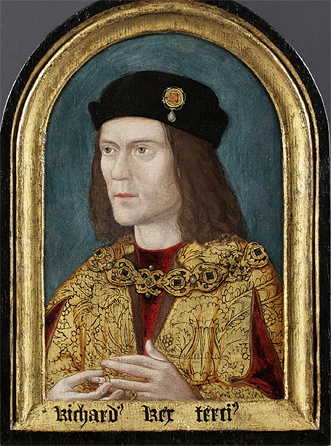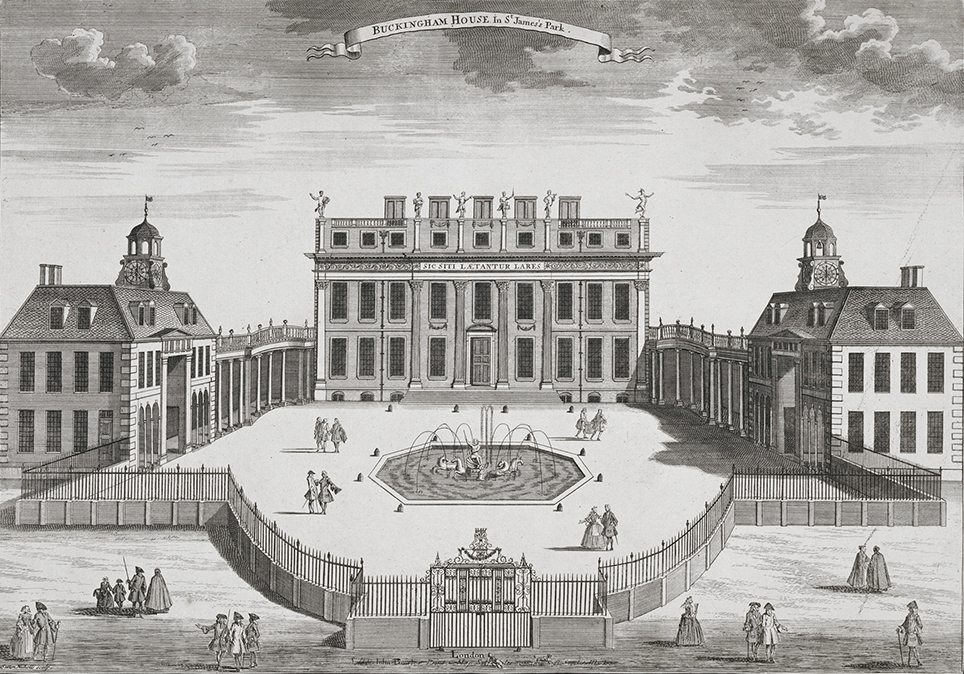© Unofficial Royalty 2024

Maria Theresa, Archduchess of Austria, Queen of Hungary, Croatia, and Bohemia in her own right; Credit – Wikipedia
May 13, 1568 – Death of Sophie of Pomerania, Queen of Denmark and Norway, second wife of Frederik I, King of Denmark and Norway, in Kiel, County of Holstein, now in Schleswig-Holstein, Germany; buried in Schleswig Cathedral now in Schleswig-Holstein, Germany
In 1518, Sophie became the second wife of King Frederik I of Denmark. Sophie became the stepmother of Frederik’s two children from his first marriage and had six children with Frederik. Sophie had a long dispute with her stepson King Christian III and then his son and successor King Frederik II about her property. First, Christian III claimed Gottorp Castle for himself and forced Sophia to retire to Kiel Castle. Sophie considered the lands that her husband had bestowed upon her as her private property and she had conflicts over revenue management and the appointment of civil servants. Sophie survived her husband King Frederik I by thirty-five years, dying at Kiel Castle at the age of 70.
Unofficial Royalty: Sophie of Pomerania, Queen of Denmark and Norway
May 13, 1717 – Birth of Maria Theresa, Archduchess of Austria, and Queen of Hungary, Croatia, and Bohemia in her own right, at the Hofburg Palace in Vienna, Austria
Full name: Maria Theresa Walburga Amalia Christina
Maria Theresa’s only brother died several weeks before she was born and her two younger siblings were sisters. Throughout his reign, her father Holy Roman Emperor Charles VI expected to have a male heir and never really prepared Maria Theresa for her future role as sovereign. Upon her father’s death, Maria Theresa became Queen of Hungary, Croatia, and Bohemia in her own right. She was unable to become the sovereign of the Holy Roman Empire because she was female. Via a treaty, Maria Theresa arranged for her husband Francis Stephen, Duke of Lorraine to be elected Holy Roman Emperor. Despite the snub, Maria Theresa wielded the real power. Maria Theresa and her husband had had sixteen children but eight of them died in childhood. Two of their sons were Holy Roman Emperors and their daughter Maria Antonia married King Louis XVI of France and became Queen Marie Antoinette of France.
Unofficial Royalty: Maria Theresa, Archduchess of Austria, and Queen of Hungary, Croatia, and Bohemia
May 13, 1767 – Birth of King João VI of Portugal at the Queluz Palace in Lisbon, Portugal
Full name: João Maria José Francisco Xavier de Paula Luís António Domingos Rafael
João VI was the son of Maria I, Queen of Portugal and her husband and paternal uncle Pedro III, King of Portugal. Because Maria I’s father José I, King of Portugal had no sons, it was inevitable that Maria would become the reigning Queen of Portugal. However, since female succession to the throne of Portugal had never happened before, her father decided that Maria would marry his younger brother Infante Pedro of Portugal, then the first male in the line of succession. In 1792, because of his mother’s mental instability, João took over the government on his mother’s behalf but he did not assume the title of Prince Regent until 1799. In 1816, Maria I, Queen of Portugal died, and her son succeeded her as João VI, King of Portugal, Brazil, and the Algarves. On March 4, 1826, after returning from a visit to the Jerónimos Monastery in Lisbon, João suddenly fell ill with symptoms that included vomiting and convulsions., and died six days later. Doctors could not definitively determine a cause of death but it was suspected that João VI had been poisoned. In 2000, a team of researchers exhumed the Chinese ceramic pot that contained João VI’s heart. An analysis of his heart detected enough arsenic to kill two people, confirming suspicions that João VI had been murdered.
Unofficial Royalty: King João VI of Portugal
May 13, 1768 – Death of Princess Louisa Anne of Wales, daughter of Frederick, Prince of Wales and sister of King George III of Great Britain, at Carlton House on Pall Mall in London, England; buried at Westminster Abbey in London, England, in the Hanover Vault under the central part of the Henry VII Chapel
Louisa Anne’s father never became King, dying when Louisa Anne was two years old and leaving a pregnant widow with eight children. Louise Anna was in poor health from birth and this caused several; unsuccessful marriage negotiations. By 1764, Louisa Anne’s health was deteriorating due to tuberculosis and she became an invalid. On May 13, 1768, nineteen-year-old Louisa Anne died from tuberculosis.
Unofficial Royalty: Princess Louisa Anne of Wales
May 13, 1778 – Birth of Honoré V, Prince of Monaco in Paris, France
Full name: Honoré Gabriel
The French Revolution had dire consequences for the princely family of Monaco. In January 1793, Honoré V’s grandfather Honoré III, Prince of Monaco was officially declared deposed, and France annexed the Principality of Monaco. Members of the former ruling Grimaldi dynasty lost all aristocratic privileges in France, were dispossessed of their French property, and became French citizens. During the Reign of Terror, in September 1793, Honoré V’s parents Honoré IV and Louise, his eight-year-old brother Florestan, and his grandfather Honoré III were arrested and imprisoned in Paris as enemies of the people. Fifteen-year-old Honoré V somehow escaped imprisonment. Illnesses resulting from his imprisonment incapacitated Honoré IV in his later years, and following the re-establishment of the Principality of Monaco in 1814, a regency was established to rule in Honoré’s name. This regency was first directed by his brother Joseph Grimaldi, then from 1815 by his son, the Hereditary Prince Honoré, who succeeded him in 1819 as Sovereign Prince Honoré V.
Unofficial Royalty: Honoré V, Prince of Monaco
May 13, 1822 – Birth of Francisco, Duke of Cadiz, King Consort of Queen Isabella II of Spain, at the Royal Palace of Aranjuez in Aranjuez, Spain
Full name: João Maria José Francisco Xavier de Paula Luís António Domingos Rafael
Francisco married his double first cousin, the sixteen-year-old Queen Isabella II of Spain. Francisco and Isabella’s marriage was not happy and there were persistent rumors that few, if any, of her children, were fathered by her husband. Nevertheless, Francisco claimed all the children as his. Only five of the nine reached adulthood. The only surviving son was King Alfonso XII of Spain, the great-great-grandfather of the current Spanish monarch, King Felipe VI.
Unofficial Royalty: Francisco, Duke of Cadiz, King Consort of Spain
May 13, 1896 – Birth of Josias, Prince of Waldeck and Pyrmont at Arolsen Castle in Arolsen, then in the Principality of Waldeck and Pyrmont, now in the German state of Hesse
Full name: Josias Georg Wilhelm Adolf
Josias, Prince of Waldeck and Pyrmont, a convicted Nazi war criminal, was the last heir apparent to the throne of the Principality of Waldeck and Pyrmont, and Head of the Princely House of Waldeck and Pyrmont from 1946 until his death in 1967.
Unofficial Royalty: Josias, Prince of Waldeck and Pyrmont
May 13, 1883 – Birth of Caroline Lacroix, mistress of Leopold II, King of the Belgians, in Bucharest, Romania
Caroline was the mistress of King Leopold II from 1900 until his death in 1909. She was just sixteen years old when their relationship began, while Leopold was nearly fifty years her senior. The couple had two sons. Caroline frequently accompanied Leopold on his travels including accompanying him to London in 1901 for the funeral of his first cousin Queen Victoria.
Unofficial Royalty: Caroline Lacroix, mistress of Leopold II, King of the Belgians
May 13, 1895 – Birth of Heinrich XLV, Hereditary Prince Reuss of Gera, son of Heinrich XXVII, 5th and the last reigning Prince Reuss of Gera, at Schloss Ebersdorf in Ebersdorf, Principality of Reuss-Gera, now in Saalburg-Ebersdorf in Thuringia, Germany
Heinrich XLV was a lover of theater and worked in the theater as a director, author, and consultant. He became a Nazi sympathizer and member of the Nazi Party. After World War II, the area that included the property and assets of Heinrich XLV was in the area of Germany the Soviet Union controlled. It eventually became part of East Germany. In August 1945, Heinrich XLV was arrested by the Soviet military and has been missing ever since. He was likely imprisoned and killed at NKVD special camp Nr. 2, the former German concentration camp Buchenwald, which was transformed into one of the post–World War II internment camps in the Soviet-occupied parts of Germany. He was legally pronounced dead in 1962.
Unofficial Royalty: Heinrich XLV, Hereditary Prince Reuss of Gera
May 13, 1900 – Birth of Georg Moritz, Hereditary Prince of Saxe-Altenburg, Head of the House of Saxe-Altenburg
Full name: Wilhelm Georg Moritz Ernst Albrecht Friedrich Karl Constantine Eduard Maximilian
Georg Moritz was the Hereditary Prince of Saxe-Altenburg and the last Head of the House of Saxe-Altenburg. Upon his death with no heir, the House of Saxe-Altenburg merged into the House of Saxe-Weimar-Eisenach.
Unofficial Royalty: Georg Moritz, Hereditary Prince of Saxe-Altenburg, Head of the House of Saxe-Altenburg
May 13, 1979 – Birth of Prince Carl Philip of Sweden, son of King Carl XVI Gustaf of Sweden, at the Royal Palace in Stockholm, Sweden
Full name: Carl Philip Edmund Bertil
Carl Philip is the only son and the second of the three children of King Carl XVI Gustaf of Sweden. In 1979, the Riksdag, the Swedish legislature, introduced an Act of Succession that changed the succession to absolute primogeniture, meaning that the eldest child of the monarch, regardless of gender, is first in the line of succession. This Act of Succession became law on January 1, 1980, making Sweden the first country to adopt absolute primogeniture. The previous 1810 Act of Succession allowed only males to inherit the throne. Carl Philip had been born Crown Prince and retained his title and first place in the succession for seven months until January 1, 1980, when his elder sister Victoria became Crown Princess and heir apparent.
Unofficial Royalty: Prince Carl Philip of Sweden
May 13, 2008 – Death of Saad Al-Abdullah Al-Salim Al-Sabah, 4th Emir of Kuwait at Shaab Palace in Kuwait City, Kuwait; buried at Sulaibikhat Cemetery in Sulaibikhat, Al Asimah, Kuwait
Saad Al-Abdullah Al-Salim Al-Sabah reigned only a little more than a week from January 15-24, 2006. He abdicated due to ill health.
Unofficial Royalty: Saad Al-Abdullah Al-Salim Al-Sabah, 4th Emir of Kuwait
This article is the intellectual property of Unofficial Royalty and is NOT TO BE COPIED, EDITED, OR POSTED IN ANY FORM ON ANOTHER WEBSITE under any circumstances. It is permissible to use a link that directs to Unofficial Royalty.

























